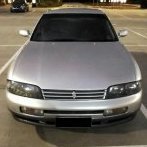Any Direct Injected 300gt / 250gt V35's?
Announcements
-
Similar Content
-
Latest Posts
-
So you're now accepting offers of 10% more than the cost of the turbo kit fitted?
-
No......not yet Minister for War and Finances has stated that the Commodore has to go first Not that I am going to modify the NC any more than what it is already modified now.....
-
By drifter17a · Posted
Thanks again, really helpful chap from alpha omega wanted to speak to me, little concerned if this is meant to he aero alloy/ airospace quality and car sitting on drive has caused this. Airplane are subject to much more changing temp and conditions than road salts! My caliper, many other components much older have surface rust but never eating part of the metal Had I not seen it , could have been a disaster! specifically on rear part of bracket coming off like biscuit will update on what they say, helpful people so far -
The MX5 has had some annoying rattles in both front doors over bumps So I installed fancy pants door bushings, which stopped all of the rattles with the windows up, but........with the windows down there was still rattles, so after some googling, and a chat with MX5 Mania, I got some new door to glass weather seals, all the rattles, windows up, or down, are gone now Shout out to MX5 Mania, the weather seals were on sale, and when I head to Dural to pick the up they even fitted them for me for free I did see a "really" nice Blue NA sitting out front and this Black NC PRHT that looked like it has sat in the sun for its whole life and never had a wash, the clear coat was non-existent, an it looked horrible, really horrible, but, it had a nice turbo kit with over 200kw, the thing went like a cut snake, bagging the rears through the gears and dosing like a champ 😍 But, as I've always stated, I am keeping my NC na, I'm happy with the current power the car makes In other news: MX5 Mania do a drive in drive out turbo kit, the only minor additional part recommended for boosting my car, as it sits now, is a oil cooler, and that bonnet vents are definitely required for track use Aftermarket version look a bit to "racecar" spec I wonder how Focus RS bonnet vents would look?????
-







Recommended Posts
Create an account or sign in to comment
You need to be a member in order to leave a comment
Create an account
Sign up for a new account in our community. It's easy!
Register a new accountSign in
Already have an account? Sign in here.
Sign In Now